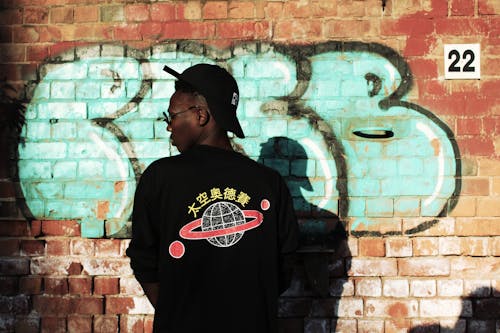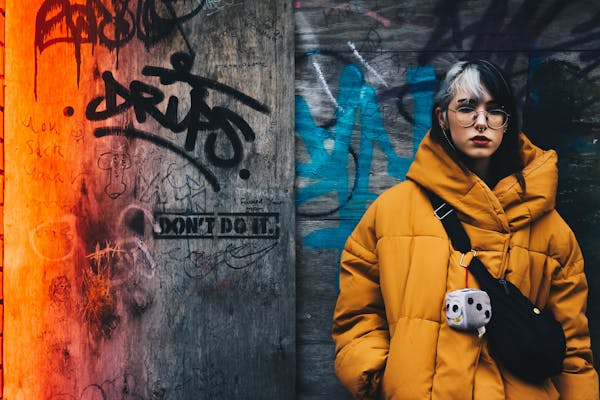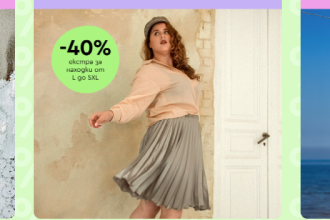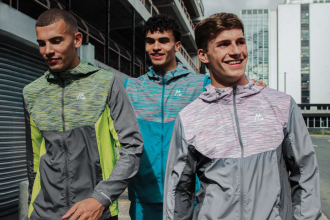What started as a grassroots movement has grown into one of the most influential forces in fashion. Streetwear, once confined to skate parks, inner-city sidewalks, and underground scenes, now sits comfortably alongside couture in high-end boutiques and fashion weeks. Its journey from rebellion to respectability reflects not just changing styles, but shifts in culture, community, and consumer power.

The Roots: Skate, Surf, and Hip-Hop
Streetwear was born in the late ’70s and early ’80s, shaped by the creative energy of youth subcultures. In California, surf brands like Stüssy began selling graphic tees that blurred the line between sport and style. At the same time, hip-hop was rising out of New York’s boroughs, with artists using clothing to express identity, neighborhood pride, and defiance.
Baggy jeans, oversized hoodies, sneakers, caps, and gold chains weren’t about fashion statements—they were about belonging. The clothes came from necessity and self-expression. Thrift stores and DIY styles dominated because the communities wearing them didn’t have access to luxury, nor did they want it. Their aesthetic was a reaction against the polished, preppy look of the mainstream.
The 1990s: Rise of the Logo
As hip-hop gained traction, streetwear brands began to flourish. Names like FUBU (For Us, By Us), Karl Kani, and Phat Farm created clothes that spoke directly to Black consumers. These were brands that celebrated urban life, from music to fashion to hustle culture. Meanwhile, skateboarding labels like Supreme and Zoo York were building cult followings in New York and Los Angeles, selling out small runs of graphic tees and hoodies from hole-in-the-wall shops.
Logos became badges of identity. Wearing a Supreme box logo tee was more than just dressing—it was about signaling you were in on the culture. The limited availability of these items only fueled demand. Drop culture was born, long before it became a marketing strategy.

2000s: The Internet and the Hype Era
As internet forums and blogs gave fashion fans more access, streetwear entered a new phase. Brands like BAPE from Japan started gaining global attention thanks to celebrity co-signs from Pharrell, Kanye West, and Lil Wayne. Hypebeast culture exploded—collectors and fans started tracking every drop, forming lines outside stores, and reselling limited pieces at sky-high prices.
Nike Dunks, Yeezys, and Jordan retros became cultural currency. Fashion no longer flowed top-down from the runway—it was coming up from the street, filtered through rap lyrics, forum threads, and viral moments.
Collaborations became the new blueprint. Supreme and Nike. BAPE and Adidas. Vans and everyone. The right logo mashup turned everyday items into collector’s gold. Streetwear wasn’t just influencing fashion—it was starting to lead it.
The Shift to High Fashion
By the 2010s, streetwear had moved from niche to mainstream. But its biggest leap was its acceptance by luxury fashion. High-end brands that once looked down on sneakers and hoodies began courting the culture directly.
Louis Vuitton’s collaboration with Supreme in 2017 marked a turning point. What once might have been dismissed as hype became a global fashion event. The two worlds merged—and the lines between street and runway blurred forever.
Designers like Virgil Abloh, who built Off-White on the language of streetwear, took over top houses. When he was named artistic director of menswear at Louis Vuitton, it signaled a full shift. Streetwear wasn’t just influencing luxury—it was now at its center.
Balenciaga put chunky sneakers on the runway. Dior started dropping B23 sneakers and graphic tees. Brands once known for tailoring now created buzz through capsules and artist collaborations. The street had become high fashion’s new reference point.
Streetwear Today: A New Balance
Streetwear today lives in a strange tension. It’s both everywhere and elusive. The scene is more global than ever, with labels from Seoul, Lagos, London, and Berlin shaping the conversation. Social media has democratized style, giving voice to communities once left out of fashion’s spotlight.
But there’s also fatigue. Some argue the term “streetwear” has lost its meaning—overused, diluted, commercialized. The scarcity that once defined it has been replaced by mass drops and corporate-backed releases. What once felt underground now feels like marketing.
Yet at its core, the spirit remains. Streetwear is still about expression. It still thrives on remixing and rebellion. And it continues to be a tool for people to say who they are—loudly, clearly, and on their own terms.
How to Wear It Without the Hype
You don’t need a $500 hoodie to tap into what streetwear represents. The heart of the style is in mixing comfort, confidence, and culture. A vintage band tee, clean sneakers, and a pair of cargo pants can be just as powerful as a designer look.
- Start with sneakers: choose pairs that match your personal taste, not just what’s trending
- Go for relaxed fits: hoodies, bomber jackets, oversized tees, or workwear staples
- Add personality: pins, patches, custom embroidery, or upcycled elements
- Mix old and new: pair thrifted pieces with fresh drops for a look that feels layered and lived-in
Streetwear was never just about buying—it was about making, styling, and standing out.

The Legacy
From its early days in skate parks and music videos to its current seat at the luxury table, streetwear has changed the way fashion works. It taught the industry that style doesn’t have to start with the elite. It proved that youth, creativity, and culture hold more power than price tags.
And while trends come and go, the values that built streetwear—individuality, resistance, and community—still hold strong. That’s what keeps it alive. Not logos. Not drops. But the people who keep remixing it, one outfit at a time.





